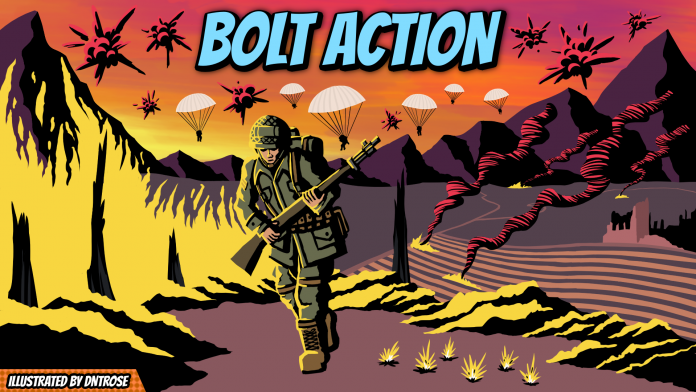Alex & Dan return with more hot takes on the brand new 3rd edition of Bolt Action. In our last article, we reviewed every change from the Orders, Shooting, Weapons, and Weapon Special Rules sections. This time we cover Close Combat, Headquarters, Unit Special Rules, and Artillery. As a reminder, the goal in this series of articles is to go page-by-page finding every change from 2nd to 3rd edition, discuss the impact the change will have on the game, and rate it.
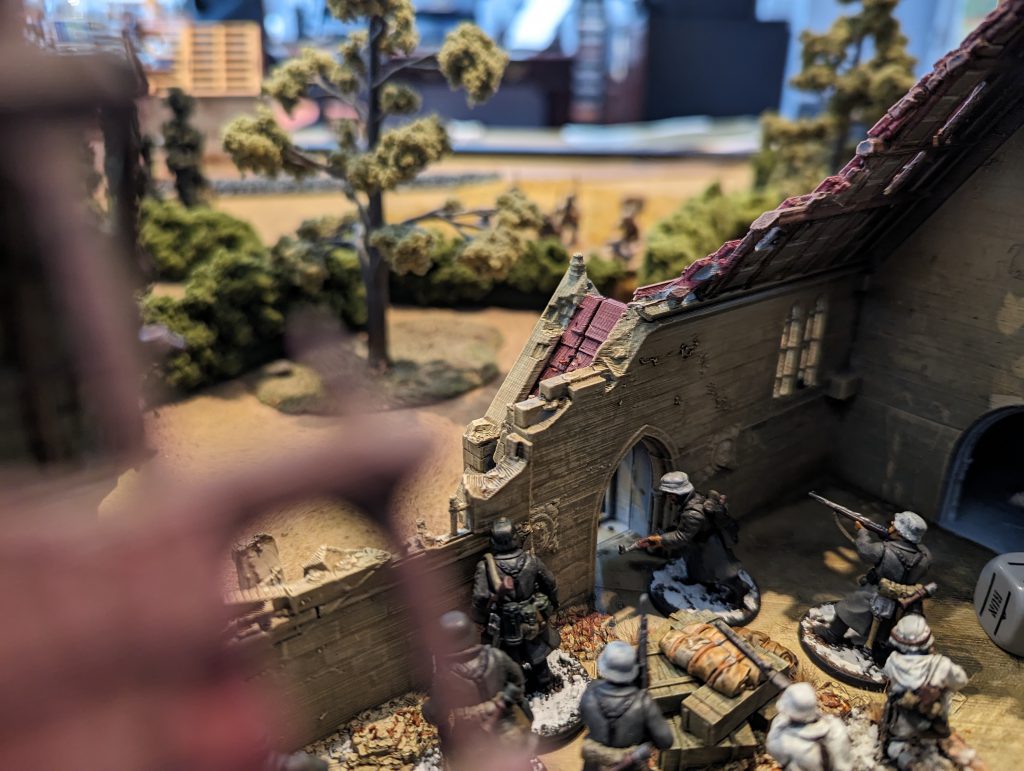
The Rating System
Each change will be rated on the following scale:
- Much Better – The rule change is excellent and significantly improves this particular rule, or adds to the game as a whole.
- Better – This changed rule is better than 2nd edition, but might not have addressed a problem rule as thoroughly as it could have, or there are slight downsides to the new rule.
- Meh – The change is neither here nor there. This could be a completely unexciting rule change, or one that will have little or no impact on the enjoyment of the game. It also covers rules that are changed, but not necessarily better than the 2nd edition version.
- Worse – This is a rule change that seems unnecessary, and/or will not improve the game experience.
- Much Worse – These rule changes will significantly detract from playing the game.

Close Combat
First Round of Combat
The order in which units attack in close combat has been changed in 3rd edition. Previously, the attacking unit was able to resolve their close combat attacks first, and then any surviving defenders could respond. Now, both attackers and defenders fight simultaneously.
Alex: This and the next change are some of the most controversial changes in 3rd edition, and I definitely have strong opinions on it. Time for a mini-rant!
First, I want to address a point of confusion I’ve seen repeatedly pop up during discussion of this topic – that being folks conflating close quarters combat with melee combat. Close quarters in BA isn’t, and has never been, meant to solely represent hand-to-hand fighting. Instead, it’s all the elements of combat that happen at close range: throwing grenades, point blank shots, and yes, sometimes hand-to-hand combat with bayonets and spades. This is explicitly stated on page 79 of the 2nd edition rulebook, and on page 109 of 3rd edition! However, proponents of this change have pointed to the relative rarity of close combat in WW2 as the raison d’etre for the diminished power of assaulting in 3rd edition.
Let’s explore this from a historical, and then from a game design stand-point. Historically, close quarters combat in WW2 was fairly common, especially in environments where artillery and armor struggled to keep up with infantry, such as urban or jungle combat. There is a reason you see many pictures of WW2 soldiers festooned with grenades. The standard infantry tactics of most combatants when confronted by an enemy defensive position was for one element to pin the enemy in place with fire, while another maneuvered close enough to chase the enemy out of their defenses with a shower of grenades. Much of the fighting at Stalingrad followed this exact template. I’m reading Louis Allen’s excellent Burma: The Longest War at the moment, and practically every encounter between British and Japan forces involved some sort of close combat fighting.
Now, from a game balance perspective, close combat did probably need to be brought down a level in power (although much of the issue stemmed from overpowered unit rules). The change from attackers rolling first to simultaneous attacks is a good change. Not only does it make sense logically (why would the defenders stand there haplessly while they’re being cut down?) but it’s also more satisfying as a game mechanic. Losing a unit to a close quarters assault without getting a chance to fight back was definitely a feel bad moment. It also jives well with Bolt Action’s philosophy of player engagement, seen in its rejection of IGOUGO activation, and recently the introduction of cover saves in 3rd edition to allow the defender to participate when being shot at. It’s really the next change that I take umbrage with, so I’ll pause my rant here, and say that this is a good fix. Rating: Better
Dan: My synopsis of the changes to combat will be much shorter than Alex’s, simply because I’ve never really focused on Close Combat in Bolt Action. In short, I fully agree with the take above and that this is a good change. No one wants to just sit around waiting for an opponent to finish mopping the floor with your unit and then just picking them up. It’s my least favorite part of Warhammer 40,000 and active participation is my favorite part of Bolt Action. Both players participating is good. Rating: Better
Defensive Positions
The other big change to close combat is that a unit in a defensive position (essentially buildings, obstacles, and rough ground) now strikes first in the first round of close combat, rather than simultaneously. The exception to this is if the defenders are Down.
Alex: While the change to the first round of combat removed one pain point regarding order of attacking, this ruling unfortunately reintroduces it – bestowing a new feel bad moment for the assaulting player. The attackers are already having to endure a hail of defensive fire, but now, have to stand there impotently while the defenders strike first? This means assaulting an enemy in cover now essentially grants your opponent two free rounds of attacks against you (on your turn, nevertheless!), before you ever get a chance to fight back. Who in their right mind would ever assault an enemy in cover now with those dual disadvantages?
Not only that, but defensive fire has become much more potent due to how it interacts with other rule changes. First, pins max out at a -1 penalty to hit now, meaning that negating enemy fire by putting a ton of pins on them is no longer possible. Second, the long range shooting penalty has been removed, making short range weapons like SMGs, pistols, and assault rifles much more dangerous in a defensive fire situation.
In the end, I think that defensive positions and defensive fire are double-dipping to give defenders too much of an advantage. Logically, it seems odd that a defending unit would have enough time to both launch a hail of gunfire, and prepare themselves for close combat (affixing bayonets, readying grenades, etc.) – but more importantly I think this is going to have serious ramifications on the balance of the game.
Essentially it has seriously weakened the ability for infantry to dig other infantry out of cover, a precept around which many scenarios have been designed. Imagine being the attacker in a Stalingrad, Fortress Budapest, or Berlin campaign scenario and having to dig enemy units out of an urban setup without being able to rely on infantry assaults. Madness. Rating: Much Worse
Dan: I fully agree with Alex on this one. It touches on my point above – standing around doing nothing absolutely sucks. Letting defenders go first is incredibly punitive. I think the worst part, for me, is that it’s not even historically accurate. Any assault on a fortified position would be opened with a hail of grenades into the occupied space to disorient and incapacitate defenders. This is a really bad rule. Rating: The Worst
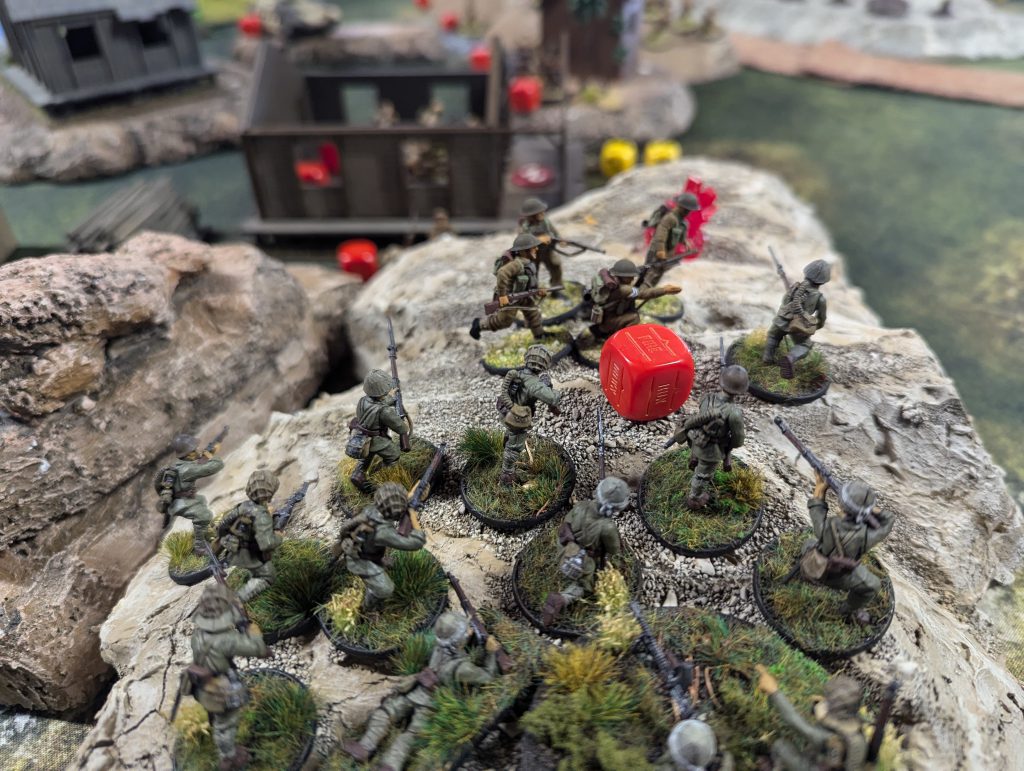
Headquarters
Officers
Lots of changes to officers in 3rd edition. First, the four officer rankings have been merged into only two: platoon commander and company commander. Second, their point costs have been significantly reduced. A regular 1st Lt. in 2nd edition ran 75 points. In 3rd edition, he is only 30 points. A regular Major, meanwhile, went from 150pts to 60pts! Lastly, officers will have to pay for their weapons once their Armies of… books come out.
Alex: I love all of these changes. The new naming convention is much easier to understand for those who struggle with military rankings (I don’t know how many times I’ve seen folks get confused on whether a 1st or 2nd Lt is higher ranked). Also, there were too many officer types, and merging them into only two is a good move. I also love the new point costs. I am quite happy to pay 30 points for someone with a +2 morale bonus, and two snap-to actions, or 60 points for +4 morale, and four snap-to actions. I can see the accessibility of company commanders really making inexperienced lists more viable. The fact that you also need an officer for each platoon means you’ll almost always have several on the field, speeding the game up with snap-to’s here, there, and everywhere. Rating: Much Better
Dan: Hell yeah, good riddance to small teams. I very much love that I’ll be able to run around with a platoon squad of 3 guys now. The point breaks are absolutely fair and sometimes even better – like Alex mentioned above, going from 150 points to 60 points for a Major rules! I think the point reductions were clearly needed because of the shift in list building to platoons that must be led by a platoon commander. Overall a great change, happy to see commanders granting bonuses to their units across the table. Rating: Much Better
Medics
Somehow in all the changes, medics didn’t get any updated rules – which I think is worth talking about.
Alex: It’s hard to see why anyone would take a medic in 3rd edition. Their use in actually saving lives is so limited that in 2nd edition they were almost always taken solely for an extra cheap order dice. In 3rd edition, however, cheap units are so readily available that you would be much better off going with an extra officer, AT rifle, or light mortar. Missed opportunity here. Rating: Meh
Dan: I took medics all the time in 2nd edition and always forgot to use their rules. Not getting any changes for 3rd is fine, I guess? They’re not very much used and they’re not very effective. I’m not sure how I’d make them more effective, honestly. Rating: Meh
Forward Air Observers
The infamous Rookie Pilot rule has been revised, preventing the airstrike from being reassigned to any unit on the board, to only one within 12” of the original target. If none are present, it’ll strafe the original target, inflicting D3 pins.
Alex: Rookie Pilot was the bane of US players, and I think turned a lot of folks off from taking air observers. Although Rookie Pilot was extremely funny, I think it makes sense to tone down. US players are now safe so long as their target is at least 12” away from their forces. I wish they’d taken this chance to simplify the air strike rules. Having to roll for the different plane types, place the various templates, and resolve flak fire is a lot and sends the game into a grinding halt every time it comes up. Rating: Better
Dan: Full disclosure – I’ve never taken a Forward Air Observer so this analysis is purely from a comparative standpoint of v2 against v3. Restricting the misfire to 12” feels better, but part of me really likes the chaos that gets introduced with stuff like massive artillery barrages, rookie pilot and FUBAR. I like the idea of the pilots just strafing now – you can be much more tactical with calling in air support. Rating: Better
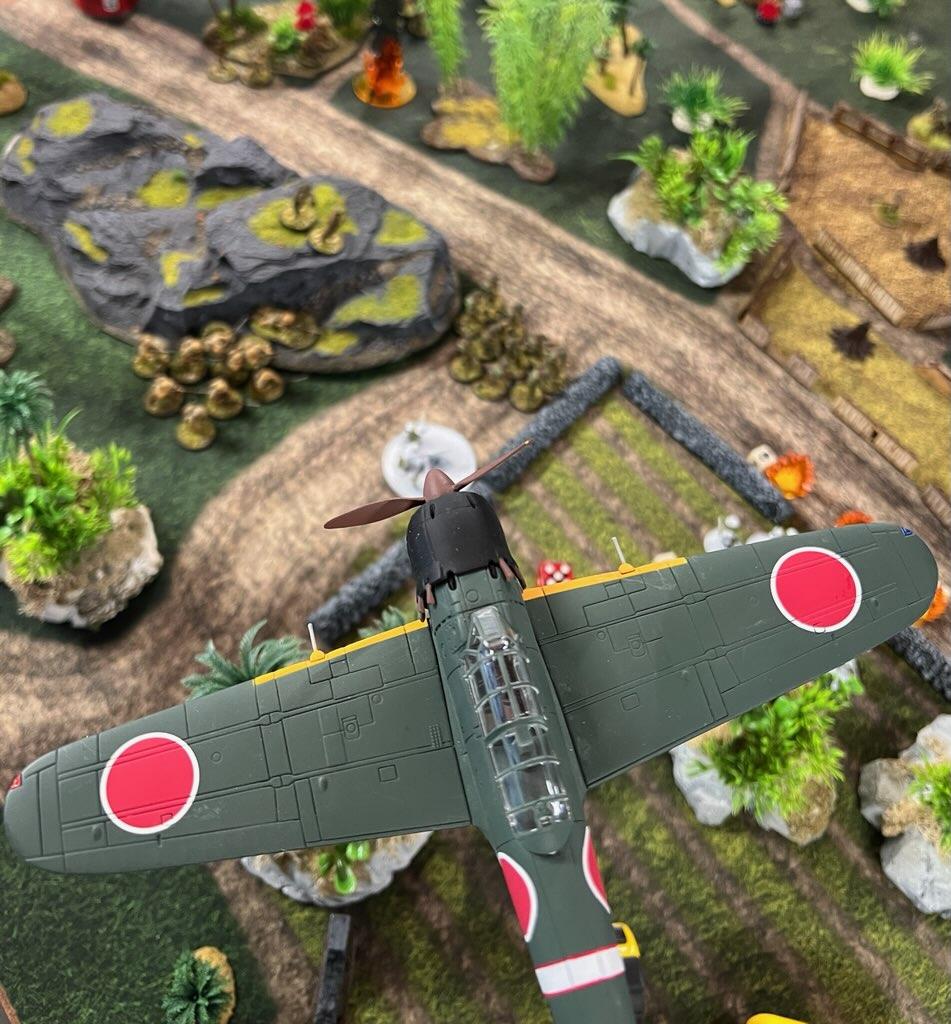
Unit Special Rules
Cavalry
Horsies are now +3pts rather than +2. Furthermore, while mounted they gain no cover benefit from being Down, and their cover save is one level worse than infantry (5+ for hard cover, 6+ for soft cover).
Alex: Boy, cavalry really had a number done on them in this edition. Not only are they more expensive, but assaulting was nerfed, defensive fire was buffed, pistols were nerfed, and their ability to use cover was reduced. Not to mention that faster units are now susceptible to running off the table if they roll a FUBAR. Cavalry needed some balancing, but this is too much. Rating: Worse
Dan: So, here’s my thing with cavalry. The entire point of cavalry is to use them as a harrying force, getting into a position to hit the enemy and then get out of dodge quickly. The entire point of them is speed. While I understand from a modeling perspective why their cover save is worse, I don’t think it accurately reflects their speed element. I would have liked to see something like a bonus to cover when moving through soft cover to represent the difficulty of hitting a fast moving target. It would have at least justified bumping them up a point – especially when considering the nerf to assault and the neutering of pistols! Too many negatives now. Rating: Much Worse
Engineers
The various engineer rules have been combined and rationalized here. First, engineers gain bonuses against fortifications, minefields, and barbed wire. More importantly, they ignore the defensive position bonus when assaulting units in buildings.
Alex: The various fortification rules are pretty niche, but fun and thematic. I’m happy to see a potential workaround to the defensive position issue, although engineers will probably almost always be better off using flamethrowers if they have them, rather than assaulting. I’m a bit confused why this rule only applies specifically to fighting in buildings. Digging enemies out of a bunker? No problem. Enemy behind a wooden fence? Sorry pal, they don’t teach that in combat engineer school. Rating: Better
Dan: Engineers are fine – they’re just specialized infantry units that are allowed to take special weapons. My favorite German unit is some Pioniers I built based on an image I saw in a magazine about the Eastern Front. Cool units, glad to see them get a rule to ignore defensive bonuses. Rating: Better
Fieldcraft
All the various “treat rough ground as open ground” rules have been collected into a single rule called Fieldcraft.
Alex: Bolt Action previously had like a half dozen rules that all did the same thing but had different names. This neatly rationalizes them into a single coherent rule. Rating: Better
Dan: Yeah, not really much to say here other than it’s nice seeing the various rules melded into a single rule. I will say though that the debate that has emerged on how Fieldcraft vs Defensive Position works has been really funny. Hopefully they clarify that soon. Rating: Better
Fanatics
One of the most powerful special rules has been taken down a peg. Fanatics no longer ignore morale checks from losing half their models to shooting. Instead, they simply ignore their pin markers while taking the morale check (aka the Stubborn rule). It also appears that the FAQ ruling making fanatics immune from morale checks due to flamethrowers is no longer in effect. It has also been reduced from +3pts to +2pts a model.
Alex: I’m glad that fanatics not caring about being set on fire has gone away, that was always silly, but I’m a bit bummed that fanatics has been reduced to Stubborn+ now. I think Fanatics should have been limited to the, well, truly fanatic soldier, and a more watered down version available to troops that were determined but not quite on the same level. I don’t think the NKVD and Japanese can really be put in the same bucket in terms of fanaticism. Rating: Worse
Dan: I have to agree with Alex here. A few years back I did a project based around the Battle of Berlin featuring the 33rd SS Charlemagne – French SS that fought to the literal bitter end of the Second World War. They had a great rule that they had Fanatics all the way down to a single man. I think that really captured the spirit of how truly insane the historical units acted, be it from nationalism, personal fervor or just propaganda. In any case, I think them just being better at doing a morale check isn’t really that great or unique. Rating: Meh
Green
The change here is that Green units now only upgrade to Regulars on a 6, rather than a 5 or 6.
Alex: This makes Green more of a gamble, where you have an equal chance of getting upgraded to Regular as having to go Down and suffer D6 pins. On the other hand, now that remaining down removes all pins, the downside isn’t as bad either. Kind of just feels like a little more boring version of the previous rule and not really worth bothering with. Rating: Meh
Dan: I can’t take free squads anymore anyway, so Green only happening on a 6 now is fine. Rating: Meh
Infiltrator
This rule lays out the special deployment abilities some units get in the unit special rule section, which makes more sense than hiding them in the deployment instructions. Furthermore, Infiltrators gain +1 to cover saves if they haven’t Advanced or Run that turn.
Alex: I like this change. Makes it more clear and gives infiltrators a bit of survivability they lost from small teams. Rating: Better
Dan: Yeah, this is an example where they really made the rule unique and standout among the changes. I really love them getting +1 to cover saves if they haven’t Advanced or Run. I like to think of this rule as the episode of Band of Brothers “The Last Patrol” when they’re getting ready to cross over The Moder – Sergeant Martin tells the patrol “Nothing shines, nothing rattles” as they get ready to infiltrate. Great rule change. Rating: Much Better
Sniper
This has undergone significant changes. Snipers no longer ignore to-hit modifiers. Instead they get a flat +1 to hit, and ignore all cover saves, with a further +1 on damage rolls to infantry/artillery. Since exceptional damage is gone, they can no longer destroy entire enemy teams but instead can choose to remove the squad leader of a unit.
Alex: All in all, I like these changes. I think this is going to make snipers experts at picking off small teams, like officers and spotters, which is exactly what they should be used for, instead of deleting entire machine gun teams in a single shot. Rating: Much Better
Dan: I’m absolutely going to miss exceptional damage, but I agree that this change places snipers into more of the role in which they actually operated rather than being some kind of super weapon. Rating: Much Better
Tough Fighters
The change to Tough Fighter is that successful rolls to damage in close combat no longer grant an extra attack. Instead, missed attacks in close combat may be rerolled by models with Tough Fighter.
Alex: I like this change. I’d much rather be able to reroll misses than get extra attacks when I may or may not need them. This makes tough fighters more reliable at hitting, rather than the “feast or famine” results that the previous version sometimes provided. Rating: Better
Dan: I like being able to reroll missed attacks instead of getting extra attacks. While I think overall assaulting suffers in V3 (at the moment), I think having tough fighters will really help even out the odds – especially on Gurkhas. Rating: Better

Artillery
Gun Shields
This rule has been changed to provide soft cover rather than granting +1 needed to damage the crew. It also is now negated by any heavy weapon.
Alex: I don’t know enough about gun shields to say if this is historically accurate or not. Are gun shields thick enough to deflect anything heavier than small arms fire? Rating: Meh
Dan: I think this change is fine. I actually haven’t seen any gun shields in person on AT guns and I haven’t done much reading on the thickness of the armor, so like Alex, I agree that I’m not really sure if this is historically representative of the efficacy of gun shields. I absolutely think it’s correct for heavy weapons to negate that rule. I’m positive the armor on artillery isn’t thick enough to deflect heavy rounds like tank armor. Rating: Better
Firing Smoke
Smoke can still only be fired indirectly, however if they don’t score a hit they simply don’t appear on the battlefield instead of letting the opponent relocate them. Furthermore, smoke now has twice as much of a chance to drift each turn.
Alex: I still can’t understand why laying down smoke is made so difficult in BA. First of all, why can’t we fire smoke directly? Second, why do I need a 6 to hit? It’s smoke, all you need to do is get it in the general vicinity. It seems like the easiest fix here would just to let smoke scatter slightly if you miss rather than having it disappear into the ether entirely. It really annoys me that such a basic tool employed during WW2 is basically unusable in BA. Rating: Worse
Dan: Jesus this rule. Using smoke in Bolt Action is so swingy and convoluted, I just ignore this rule completely. I really hope at some point they change the rules to make it easier to get troops around the table and to make it a little more effective. Rating: Worse
Outro
Final tally:
- Much Better = 5
- Better = 12
- Meh = 6
- Worse = 4
- Much Worse = 3
Bit of a mixed bag here in the middle of the rulebook. Next time we’ll return to cover the final section of the rulebook: Vehicles, Buildings, Scenarios, Force Selection, and the rest!
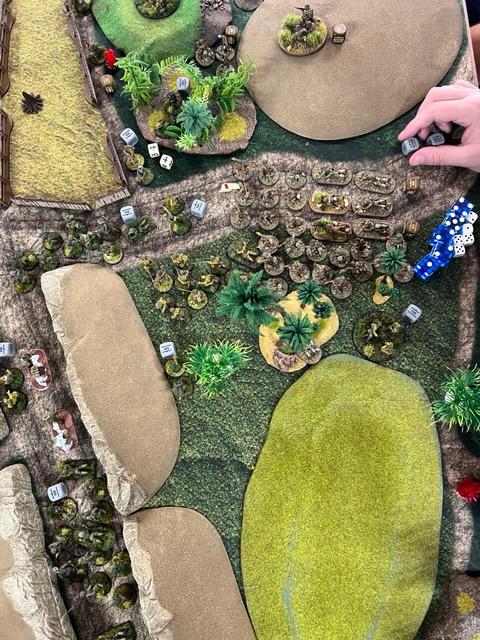
Have any questions or feedback? Drop us a note in the comments below or email us at contact@goonhammer.com. Want articles like this linked in your inbox every Monday morning? Sign up for our newsletter. And don’t forget that you can support us on Patreon for backer rewards like early video content, Administratum access, an ad-free experience on our website and more.
